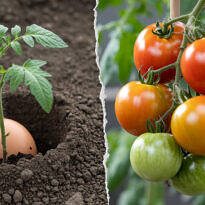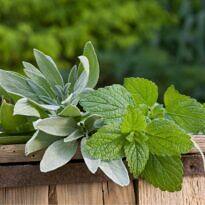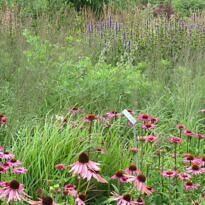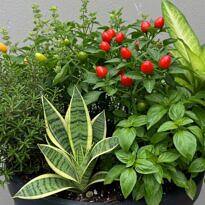Springtime marks the beginning of lawn care season. As plants start to grow, it’s the perfect moment to enjoy your garden. However, many individuals and businesses often limit their lawn care efforts to frequent mowing and indiscriminate herbicide applications. Unfortunately, these practices often harm the lawn more than they beautify it, resulting in sparse grass and an increasing weed presence. How does this happen?
Taking care of a lawn is a task that needs to start from the foundation – the soil. This advice applies even if your lawn is already established. Soil care should be an ongoing practice, not just a one-time event during planting. Alongside soil care, there are management secrets that can help transform your lawn into an envy-worthy carpet of green. It will be the greenest and most beautiful grass! Guaranteed. Let’s dive into our checklist of 10 items to ensure you have a stunning lawn in spring and throughout the seasons:
1. Thatch Raking
Raking and removing dry thatch that may have accumulated during winter is important to facilitate healthy lawn growth. Excessive thatch hinders the penetration of light, water, and nutrients, and provides shelter for pests, making control even harder. Use a good rake and perform this operation in dry conditions. Excess moisture could lead to inadvertently removing healthy grass instead of thatch.
2. Soil Analysis
Even if you’ve applied limestone for pH adjustment during lawn establishment, it’s essential to periodically check the soil’s pH. The initial neutralization might not suffice or could have worn off. Excessive limestone can also be an issue, but it requires accurate diagnosis. Additionally, apart from pH assessment, a comprehensive analysis conducted by a specialized laboratory reveals imbalances in nutrients and micronutrients – excess or deficiencies. This empowers you to rectify these issues and ensure your lawn’s health.
3. Fertilization
Based on the analysis results, correcting soil fertility is crucial. Even if you skipped the analysis, it’s recommended to fertilize with essential macro and micronutrients. As the grass grows rapidly during this season and undergoes successive mowing, many nutrients are consumed and lost with clippings and thatch removal. Focus on replenishing nutrients with a balanced lawn-specific fertilizer.
4. Aeration
Areas subjected to constant foot traffic, frequent mowing, and clay soils tend to compact quickly. This results in bare patches and weeds. Rainwater may pool in certain spots, while opportunistic diseases take over the lawn. Avoid the repercussions of compaction by aerating the lawn. Special footwear or attachments with spikes can be used to puncture the soil, allowing water, air, and nutrients to circulate around the roots, facilitating the regeneration of affected grass.
5. Patching Bare Spots
If disease or poor management left some parts of your lawn bare, now’s the ideal time for correction. The warm and humid season is conducive to grass regeneration. Purchase grass sod, cut it to fit the bare patches, and water these areas generously for a few weeks. Be cautious not to create an uneven lawn surface. If necessary, remove some soil to ensure a seamless fit. Fill holes and gaps with washed sand. Avoid trying to fix bare spots in shaded areas. In such cases, consider replacing the patch with a shade-tolerant ground cover to create a flower bed. This not only resolves the issue permanently but also enhances the garden’s beauty.
6. Weed Control
Spring is the opportune time to stay vigilant against weeds. Remove stubborn plants before they produce thousands of seeds. Alongside traditional weeding tools, consider utilizing new market tools to ease the process. Targeted herbicide applications can be replaced by an ancient yet effective technique: torch burning. This method not only controls weeds but also minimizes environmental pollution caused by chemicals. However, if your lawn is extensive and weed control is challenging, consult an agronomist to recommend the best herbicide option. Avoid cheap solutions offered by dubious gardening companies that could cause irreparable damage to your lawn.
7. Mower Maintenance
Encountering issues with your lawnmower can be frustrating. Prevent this headache by conducting proper maintenance on the machine. If possible, contact authorized service centers for blade sharpening, oil change, filter replacement, and a comprehensive machine check. After all, your lawnmower is a significant investment, and proper maintenance prolongs its lifespan, keeps it ready for work, and prevents accidents due to malfunctions.

8. Mowing
A lawn cut at the appropriate height maintains its health and strength through successive mowings, crucial during the hotter months. Letting the grass grow excessively between cuts leads to bare patches. Conversely, cutting too short harms regeneration, promotes compaction, and weeds, and renders the lawn vulnerable to drought. Therefore, mow at the right height, adjust the mower’s setting (avoid using a string trimmer), and follow a schedule that respects the grass’s growth rate. Each grass species has a recommended height, so determine the type in your garden for proper maintenance. Refer to the table below:
Table of Recommended Cutting Heights
| Species | Height |
| Bahiagrass (Paspalum notatum) |
5 cm |
| Carpet Grass (Axonopus compressus) |
3 cm |
| Zoysia Grass (Zoysia japonica) |
3 cm |
| St. Augustine Grass (Stenotaphrum secundatum) |
3 cm |
| Kentucky Bluegrass (Poa pratensis) |
3 cm |
| Korean Grass (Zoysia tenuifolia) |
2 cm |
| Bermuda Grass (Cynodon dactylon) |
2 cm |
9. Pest and Disease Control
Heat and humidity can lead to a surge in lawn pests and diseases, especially if the lawn was neglected in autumn and winter. Properly diagnose issues such as grubs, beetle larvae, caterpillars, termites, ants, and diseases like brown patches and dollar spots. Once you’ve identified the problems affecting your lawn, treatment can be targeted to restore the desired health and uniformity.
10. Mitigate Drought Impact
You can “train” your lawn to better withstand drought periods. Cutting the grass taller encourages deeper root systems. Similarly, deep and spaced watering is superior to frequent, shallow watering, as it encourages root growth. A lawn with strong and deep roots can efficiently extract moisture from the soil, making it resilient to dry spells, as long as they aren’t too prolonged.







